by Sheldon Frith
Livestock management is quietly undergoing a massive transformation. It began in the 1970s when Allan Savory developed Holistic Management, and from there many farmers have continued to refine the art of grazing.
Holistically Managed livestock are bunched close together, moved around the land frequently, and don’t return to the same piece of land for a long time. They mimic the behavior of the natural herds which used to roam the entire Earth.
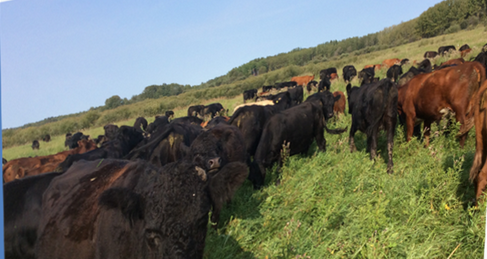
Holistic Management has spread like wildfire among grass-based livestock producers because it dramatically increases grass growth. Recently, however, an unexpected benefit of this grazing technique has been discovered: it sequesters carbon in the soil at an amazing rate.
I must make it absolutely clear that I am against factory farming. The evidence that factory farms are environmentally destructive is overwhelming.
Holistically Managed livestock are completely different.
Only a short time ago the Earth supported staggering numbers of huge herbivores, called megafauna. These megafauna lived for millions of years without causing global warming.
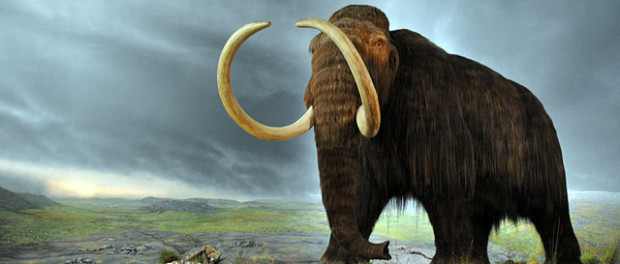
This is despite the fact that the total biomass of these animals was significantly higher than the total biomass of all large animals, including humans and livestock, on the Earth today. All of these animals were emitting methane from their digestion and exhaling carbon dioxide. How is it possible that this did not effect the atmosphere?
The answer lies in the soil. Through their specific patterns of grazing, trampling, and digesting, large herbivores greatly stimulate soil microorganisms. These soil organisms are responsible for sequestering carbon and methane in soil.
Conventionally Managed livestock do not behave like a natural herd. Their beneficial relationship with the ecosystem is broken. In these situations they are not sequestering carbon, or methane, and become significant contributors to global warming.
Holistically Managed livestock replace the essential ecosystem services that the lost herds of megafauna used to provide. The ecosystem immediately begins to regenerate, and carbon is stored in the soil at an astounding rate.
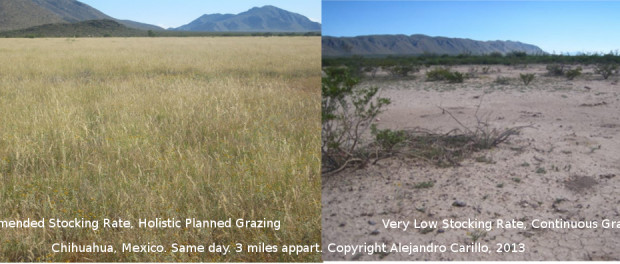
How much carbon do Holistically Managed livestock sequester?
Although the idea of sequestering carbon with Holistically Managed livestock has only entered public consciousness very recently, there is already a surprising amount of data documenting its effectiveness:
- Emerging Land Use Practices Rapidly Increase Soil Organic Matter a study of three farms in the southeastern USA found that they sequestered 3.2 tonnes of carbon/year/acre after switching to management intensive grazing.
- GHG Mitigation Potential of Different Grazing Strategies in the United States Southern Great Plains an analysis of different grazing systems found that converting to multi-paddock grazing sequestered 2 tonnes of carbon/year/acre.
- Communities in Landscapes project Benchmark Study of Innovators shows an increase in soil carbon of 0.9% over the top 10 cm of soil with Holistically Managed livestock for 10 years on cropland compared to conventional management. (0.43 tonnes carbon/acre/year)
- West Wind Farm “In 2008 the WVU Soil Lab supervisor calculated that 4 tons/acre of organic matter increase meant that in 5 years each acre of pasture WWF had drawn 15 tons of CO2 from the air into the pasture.” (0.8 tonnes carbon/acre/year)
- Brown’s Ranch increased soil organic matter from 1.7% (1993) to 5% (2013), with certain areas of land rising to over 10% SOM in that same time period. (2 tonnes carbon/acre/year)
- Refer to the Soil Carbon Coalition’s excellent map for more studies.
Using the average rate of carbon sequestration across all of the data above (1.7 tonnes/acre/year), Holistically Managed livestock could sequester over 21 Gt of carbon annually if they are put on all of the world’s 12.5 billion acres of farmland. This would return the Earth’s atmosphere to its pre-industrial state in just 13 years!
For more information about this calculation please refer to “The Calculation: Soil organic matter needed to bring down atmospheric carbon”.
Conclusion
Eating more meat from Holistically Managed livestock is actually one of the best things we can do for the planet. As environmentalists, we need to stop making generalizations about livestock and meat which do not account for the dramatic differences between management systems. We also need to push researchers and policy makers to explore the potential that Holistic Management has for healing our planet.
Please refer to “Letter To A Vegetarian Nation” for more information on this topic.
More
Regeneration of Soils and Ecosystems (by Íñigo Álvarez de Toledo; Research Assistant: Luna Politi for The Institute for Applied Ecology)
Sheldon Frith
 Sheldon grew up on the edge of the Amazon rainforest in Brazil. The destructive deforestation he witnessed as a child left him with a deep passion for environmental restoration. After years of searching, Sheldon discovered Holistic Management and realized immediately that this was the answer he had been looking for. Sheldon currently lives in Canada. In the winter he writes about regenerative agriculture on his blog, sheldonfrith.com, and in the summer he works on various regenerative farms around Canada. Sheldon is currently writing a book about regenerative livestock, and he is also working to establish a rewilding research site in Canada called “Rewild The North”.
Sheldon grew up on the edge of the Amazon rainforest in Brazil. The destructive deforestation he witnessed as a child left him with a deep passion for environmental restoration. After years of searching, Sheldon discovered Holistic Management and realized immediately that this was the answer he had been looking for. Sheldon currently lives in Canada. In the winter he writes about regenerative agriculture on his blog, sheldonfrith.com, and in the summer he works on various regenerative farms around Canada. Sheldon is currently writing a book about regenerative livestock, and he is also working to establish a rewilding research site in Canada called “Rewild The North”.

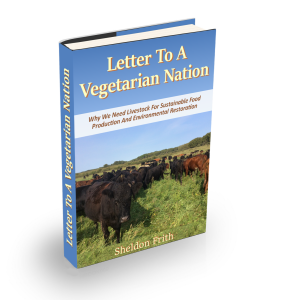



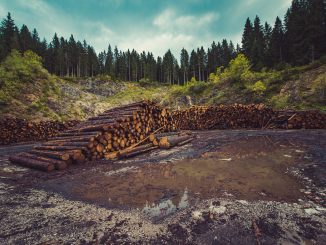

Thanks for your comment Paul Price.
Sorry, that previous article was not a good Zimov article to refenence. I have found a much better one specifically about megafauna biomass:
http://www.sciencedirect.com/science/article/pii/S0277379112003939
I do not know why you concluded that Zimov’s estimates are based on “modern horse numbers”, as this article indicates they are based on surveys of mammoth bone densities in the permafrost of many sites across northern Siberia.
I consider Zimov’s data to be more reliable than the studies you cite because it is based on physical evidence from the pleistocene, not theoretical extrapolations of ecological principles which were derived from observations of post-Quaternary ecosystems which are well acknowledged to be dramatically different than pleistocene ecosystems.
You should read the new article I just linked, I find it far more convincing than any of the articles you have cited.
” We calculate, based on animal skeleton density in frozen soils of northern Siberia, that mammoth-steppe animal biomass and plant productivity, even in these coldest and driest of the planet’s grasslands were close to those of an African savanna. ”
And for those of you reading these comments, I encourage you to browse through all of the articles being referenced with a critical eye. Reading them FOR YOURSELF is the only reliable way to know which of us is more likely to be right. Unfortunately estimating Pleistocene biomass levels is HARD. The question is not which estimate of biomass is correct, the question is which is MORE LIKELY to be correct. For me, I choose the Zimov article cited in the comment. I trust the methodology much more.
What about that article cited by Barnosky? (http://www.vaclavsmil.com/wp-content/uploads/PDR37-4.Smil_.pgs613-636.pdf) Did you even read it? There is not even a single attempt at estimating pre-Quaternary animal biomass levels or compare them to modern day biomass levels in that study. So it is entirely irrelevant to the current topic of conversation.
I completely disagree with the Sheldon Frith’s comments regarding Barnosky’s 2008 PNAS paper, “Megafauna biomass tradeoff as a driver of Quaternary and future extinctions”. It is absurd to suggest that estimates of modern animal populations are “totally useless for estimating Pleistocene population levels”(in his opinion “for many obvious reasons”). In fact, his own Zimov reference does exactly the same by justifying their animal density on the basis of a self-reference assessment on modern horse numbers. By your own logic, the basis of Zimov too then is ‘totally useless’.
Also, the Silva and Downing paper that Sheldon Frith disparages gives a highly detailed analysis of the scaling of density and body mass for terrestrial animals that is clearly relevant evidence for biomass of any era. In contrast it is notable that the Zimov & Zimov paper lacks such references and seems more self-referential than one would like to make the assertion that Pleistocene biomass was equivalent to today’s.
I contacted Anthony Barnosky by email who replied saying, what must surely be obvious to most readers:
“Megafauna biomass is many times higher today than it was before humans grew their population to billions and concurrently multiplied the biomass of domestic large animals. See also work by Vaclav Smil paper attached”
The Smil paper is here: Harvesting the Biosphere: The Human Impact
VaclaV Smil http://www.vaclavsmil.com/wp-content/uploads/PDR37-4.Smil_.pgs613-636.pdf
Smil details the extreme effect of human agricultural productivity in increasing biomass.
I think that Sheldon Frith would do well to look again at the evidence regarding terrestrial biomass. As per Barnosky Fig 3, the current biomass of humans, megafauna and livestock (increasingly fed over recent decades by fossil fueled grass and grain agriculture) is many times greater than in the Pleistocene.
Also, A commenter from twitter posted a link to this article: http://ib.berkeley.edu/labs/barnosky/Barnosky%20PNAS%202008.pdf
which seems to indicate that megafauna biomass levels were actually much lower than they are today. A little digging (aka. actually reading the article) reveals that the biomass estimates are not reliable.
From the article:
“Number of individual animals per species was estimated in the following way. in the following way. First, there is a correlation between body mass and population density,thatis, individuals per km2 (24–26). To estimate density, I used regressions from ref. 25: for large
herbivores, density $ %0.44 & log(kg body mass) ‘ 1.01; and for large
carnivores, density $ %1.31 & log(kg body mass) ‘ 1.22.”
So the biomass estimates were really based on this article: http://www.public.iastate.edu/~downing/tier%202/jadpdfs/1995%20Allometric%20scaling…%20704-727.pdf
And the density estimates in this second article are derived from estimates taken of MODERN ANIMAL POPULATIONS, which is totally useless for estimating Pleistocene population levels, for many obvious reasons. It is no wonder that the first article magically arrives at prehistoric biomass levels almost identical to modern wild animal biomass levels, since that is where the population estimates came from in the first place!
Hi Fintan,
Here is the reference for that:
Zimov S, Zimov N. Role of Megafauna and Frozen Soil in the Atmospheric CH4 Dynamics. PLoS ONE. 2014;9(4):e93331. doi:10.1371/journal.pone.0093331.
“If our calculations of animal densities in the Pleistocene are correct (or at least close), it appears that wild nature solely on recycled resources managed to sustainably maintain biomass higher than the entire biomass of modern civilization (humans and all domestic animals) …”
Hello Mr Firth, I enjoyed your article but Im uncomfortable with some of the facts. Could you direct me to the studies comparing total megafauna biomass to current livestock.